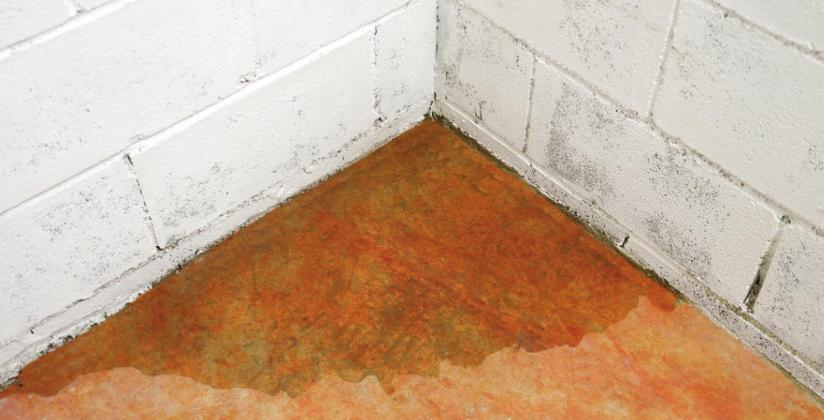APRIL IS WHEN MELTING SNOW and spring showers lead to the ground being saturated, which poses a threat that can take away the breath of homeowners, almost literally.
That threat is of water leaking into basements. It’s well known that a wet basement can lead to structural damage, but not so understood are the health risks brought on by dampness.
There are four principal health hazards—nearly all of them invisible to the naked eye—that can threaten a family’s well-being from mere annoyance to serious consequences. The good news, though, is that they can be rectified. They are:
Mold
This is the most common health hazard in moist environments. Mold releases tiny spores, which when breathed in can damage a person’s airways and lead to headaches, respiratory illnesses, coughs, nose and throat discomfort, asthma, and a general shortness of breath.
Chronic sinus problems sometimes can result from mold. An online health source cites a study in which 90 percent of chronic nasal problems could be traced to mold in the home or workplace.
Through its effect on the respiratory system, mold can bring on fatigue. The coughing, congestion, and asthma attacks spurred by mold can disrupt sleep, resulting in listlessness and an overall lack of energy.
Mold’s ill effects go beyond the respiratory system. Mold can trigger a rash, usually as mild to moderate pink and brown areas on the skin. Such a rash may itch, although not always, and may come and go periodically.
An allergy to mold spores can set off an immune response like any other form of allergy, increasing levels of histamine that can cause itchy, watery eyes and a runny nose.
Bacteria
A wet basement is a breeding ground for bacteria. Once airborne, bacteria can lead to a variety of harmful infections, especially to the respiratory system. And with bacteria, there’s a vicious cycle: If someone in the household has an infection, bacteria from that can circulate throughout the home through ductwork. When the germs reach the basement, they’re trapped by the damp air, where they thrive. Those germs circulate back through the house, where they reinfect the original ailing person or infect others in the house.
Dust mites
These micro-pests are a surprise addition to the damp basement health-hazard mix, but when considering that they thrive in dusty, musty conditions, that shouldn’t be the case. The dirt in an unfinished, largely unused basement provides a natural habitat for these tiny critters; add humidity brought on by dampness, and dust mites can multiply quickly.
Speaking of humidity, experts suggest that to counter the ill effects of a damp basement, humidity levels should be brought down below 50 percent.
Like bacteria, mites spread throughout the home, in their case in search of food. In addition, the skin they shed can go airborne through ductwork. Anyone allergic to mites or who has severe asthma likely will see their symptoms grow more severe.
Bigger pests
Dust mites are too small to be seen, but not so with the other pests that damp basements attract: mice, cockroaches, spiders, and ants, among other unwelcome creatures not-so-great and small.
In particular, mice and rats not only leave behind bacteria and fungi in their droppings, but they also cause property damage by chewing through walls and material.
So now you know the health hazards of wet basements. What can you do to rectify the problem? Four things:
1. Insulate water pipes that may produce condensation and moisture.
2. Run a dehumidifier.
3. If you do laundry in the basement, ensure that there is proper ventilation to keep the air dry.
4. Hire a professional, reputable, warrantied company that specializes in drying out basements and keeping them free of mold, bacteria, dust mites, and pests.
By knowing these health hazards and how to eliminate them, you and your family can breathe easier this spring and beyond.
Dennis Bova is a freelance writer and editor.


